
For years, a British Christmas meant kids would wake up on Christmas morning and find comics in their stockings. No, they're not lazy housekeepers. Nor are they ignorant of modern comic book protective devices. British publishers have been issing Christmas Annuals for kids since the time of Cromwell. Well, that's not true. Anyway, just about anything that will sit still long enough to be photgraphed, illustrated, or written about has had an annual; TV shows, sports stars, toy lines, and of course comics.
As a special Christmas treat for you, Mister Kitty takes a look at annuals from a vanished industry that many people outside England never knew existed - British girls comics. For almost fifty years publishers like IPC and DC Thompson were cranking out weekly titles with names like Tammy, Judy, Mandy, and of course Bunty, the first British girl's comic. As literature for young ladies, these comics naturally featured lots of stories about plucky ballerinas, airline stewardesses, and horses. But just like their more masculine counterparts Starlord and 2000 AD, British girls comics seem to have a flair for the goofy, the bizarre, the surreal. Just check out the hook in our first example.

Why, that's a situation any teenage girl can relate to. While boys comics starred gimmicky heroes like Kelly's Eye and Robot Archie, girls could relate to girlier plot devices:
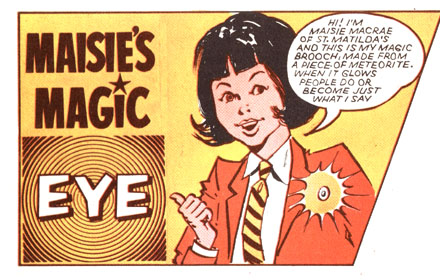
Gosh, what mind-controlling hijinx will Maisie get up to this week? Some story concepts were actually pretty vague. Here's England's answer to Little Dot:
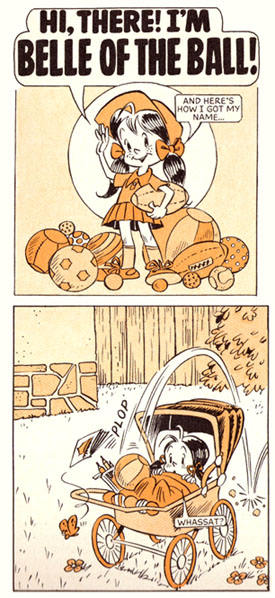
She's a girl, and she likes balls. She gets into all sorts of ball-related mischief. She grew up and married Buster Gonad from Viz. Well, actually Belle was returned for regrooving...

Now she's blonde and her ball was treated by outer space people. If that isn't high-concept I don't know what is. Other characters were even more disturbing:

Why, what could be more disturbing than a topless little girl Tarzan? Let's throw in some insulting stereotypes while we're at it. Not all stories were this cartoony, however.
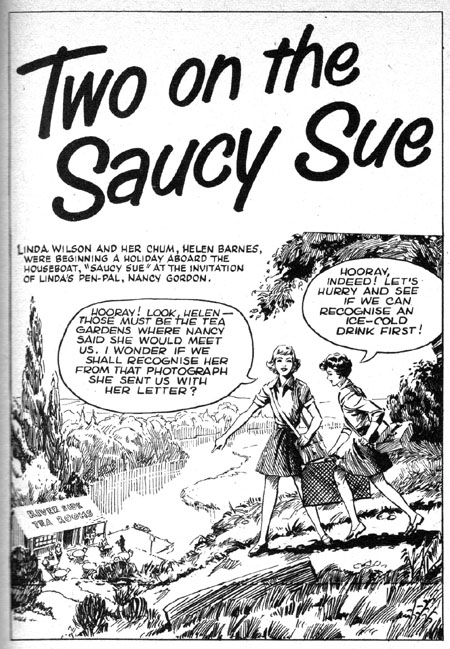
The tale of the Saucy Sue is rendered with delicate crosshatching and an astonishing eye for detail. The whole strip has this classy 1930s Miss Marple mystery vibe.
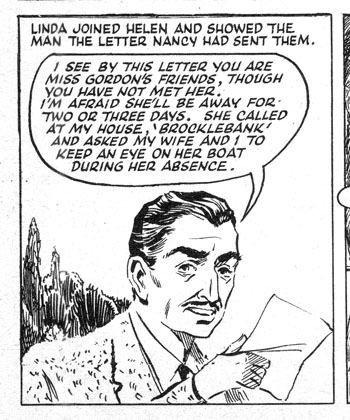
This extends to the obvious villain, who has overcome his obvious thalidomide birth defect and moved on to a life of evil. Good for him.
Of course romance plays a big part in these stories, but since these are comics for preteens and "tweens," boy-girl relationships are limited strictly to chaperoned dances and whimsical happenstances. For instance, what if your older brother is so handsome the girls bother him all the time? That's a real problem many younger sisters have to deal with every day of their lives!
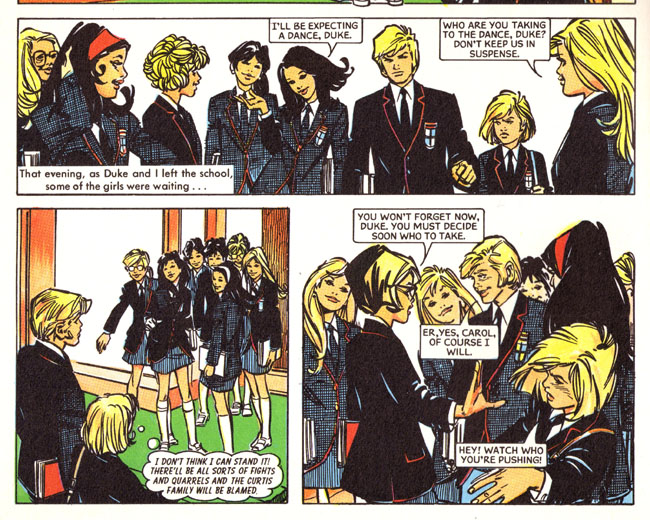
This strip, "My Brother Marmaduke", not only features sharp, classy Jesus Redondo artwork, but has a weird incest jealousy vibe that Redondo would later visit in his Starlord strip "Mind Wars", where the teen esper hero falls in love with a duplicate of her twin brother. Where you going with that, Redondo?
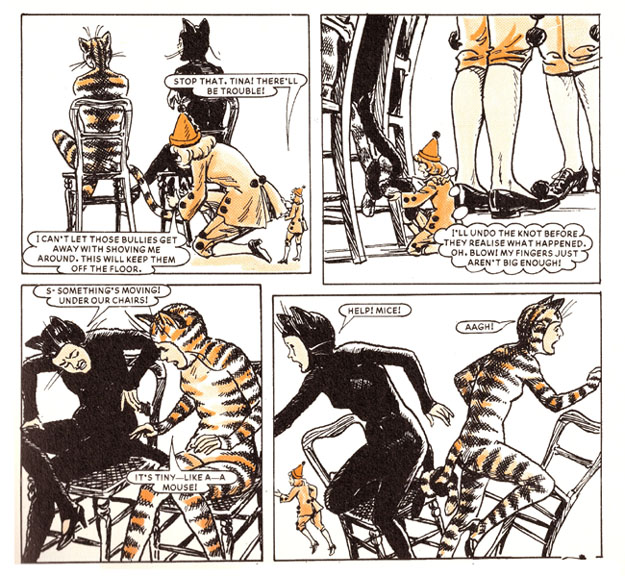
The strip "Teeny Tina", on the other hand, stars a girl who has a tiny duplicate of herself who frightens girls dressed in cat costumes. Rife with psychosexual imagery, this sequence cries out for proper clinical analysis. But it's not all subtext in the annual world; some characters are simply defined, Harvey Comics style, by their obsessions:
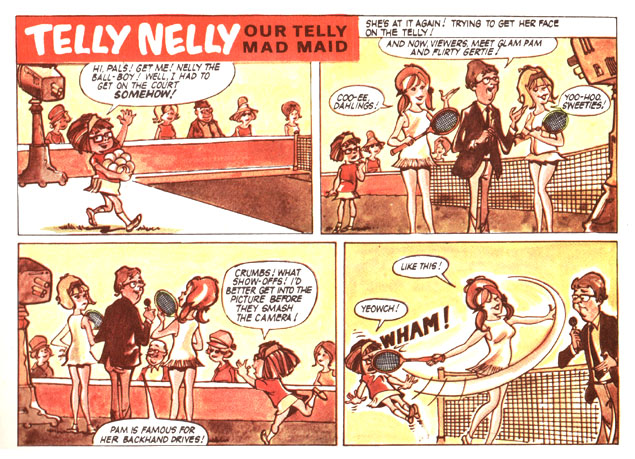
Telly Nelly simply wants to appear on the television, and will destroy anyone and anything that stands in her way. That's all.
And these comics aren't all fun and games. Real-world problems and issues were sometimes dealt with in a frank and open fashion, uncompromising and stark, facing society's problems head on. For instance...

Sometimes, sometimes Daddy buys you a pony, and that pony is SO mischevious and fun-loving that it becomes embarrassing at equestrian events! A real-world problem that many British teenage girls wished they faced.
Another staple of the girls annuals are the photo stories. These fumetti style comics starred editor's relatives and people found on the street, and usually involved cheesy soap opera dilemmas. This one had a happy ending, as we can see:

Truly a merry Christmas is being had by all! Just check out these happy, beaming faces!

Yup, really enjoying this holiday get together. Almost as fun as my last root canal.

They say suicide rates increase during Christmas season, and after seeing these photos, I believe it.
Speaking of long-running traditions, the heavy hitters of British girls comics are a fab foursome that came out of the clubs of Liverpool... er, I mean, the pages of "Bunty".
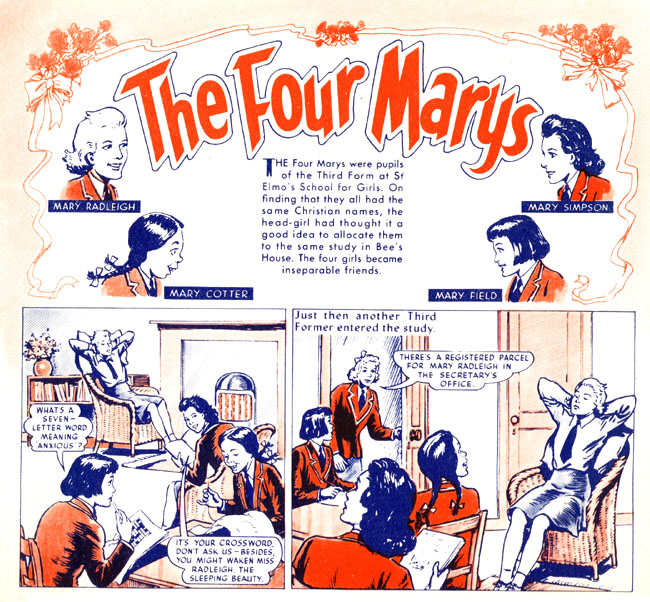
The Four Marys - Third Formers at St. Elmos - are four wide-awake young British girls who have low-key mysteries and adventures usually involving pets or cameras or tuck shops. They've been in the Third Form since 1958 and probably are thinking of retiring soon. The "Four Marys" were, in reality, 4 young women chosen to be ladies-in-waiting to Mary Queen Of Scots, and also are a female music trio from Newcastle. Pop culture references live on!

As time marched onwards towards the mid 1980s the Marys got makeovers... particularly Mary Cotter, who persuaded Daddy to get her a new nose and orthodontic work. Still in the Third Form, I see. I think that's a slang term for bra size.
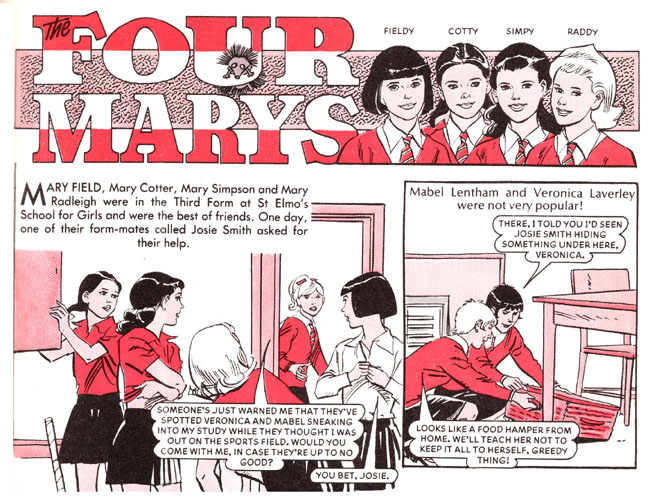
1989 rolls around and the Marys are still going strong, though now they are virtually identical. The better to foil the naughty plans of Veronica and Mabel, those unpopular girls!
Bunty closed up shop in 1992 and the Four Marys vanished into the mists of time; though they did appear in a Judge Dredd story entitled "There's Something About The Four Marys".
This concludes our trip to Christmas Past, a holiday of ponies and balls and chimps and Marys. Will those days ever come again? Only DC Thompson knows.
PREVIOUS STUPID COMICS
NEXT STUPID COMICS
BACK TO STUPID COMICS INDEX
BACK TO MAIN INDEX


















